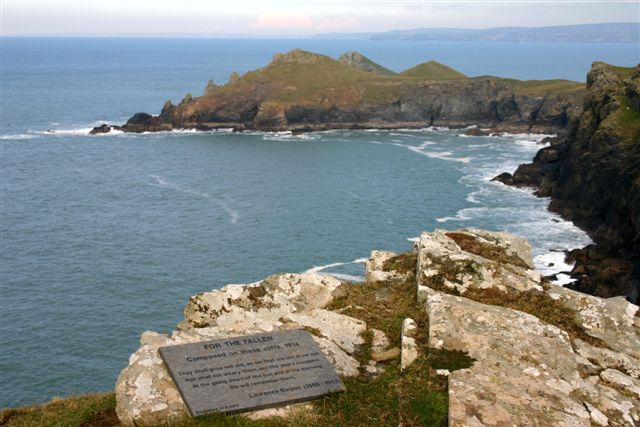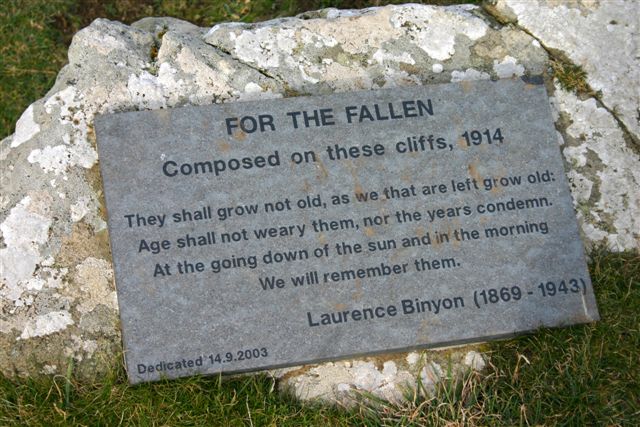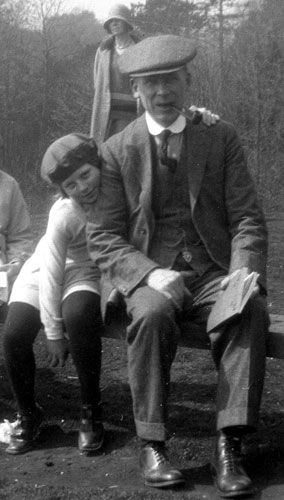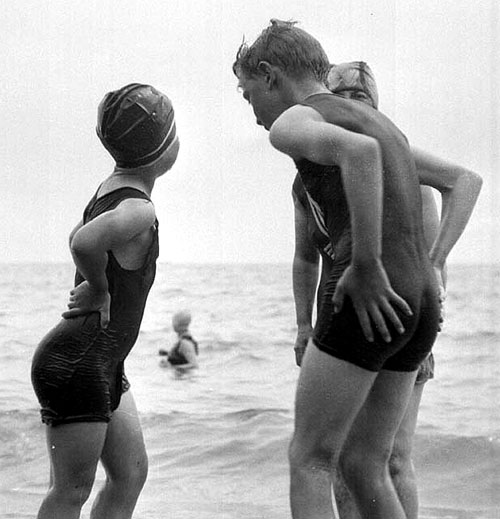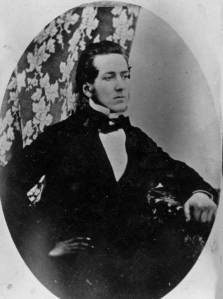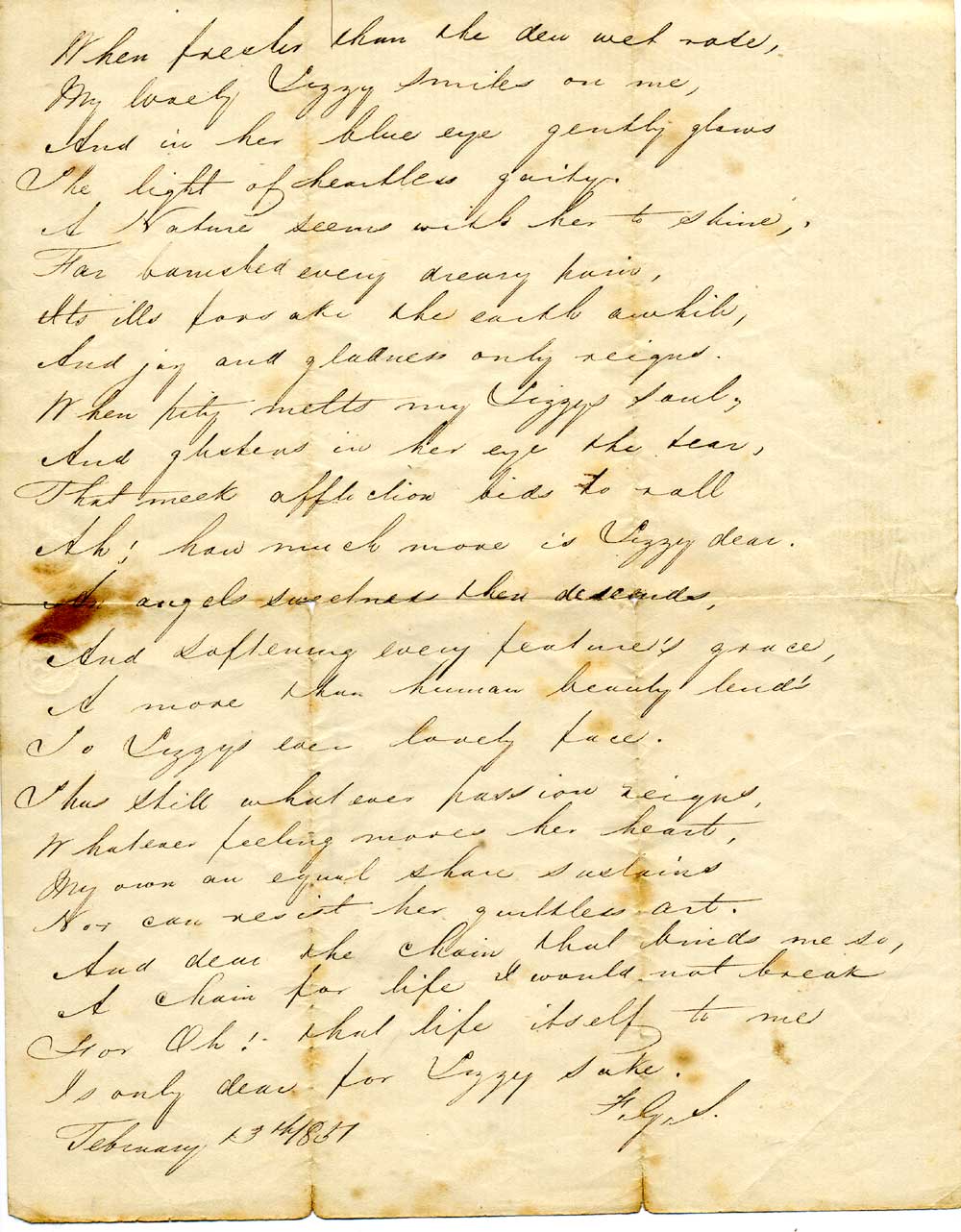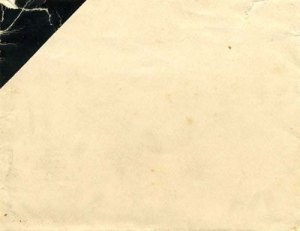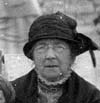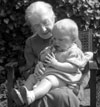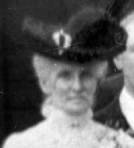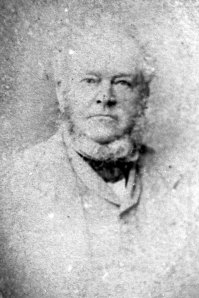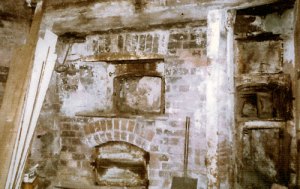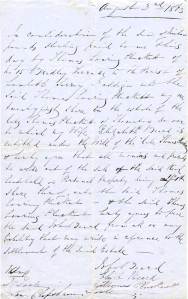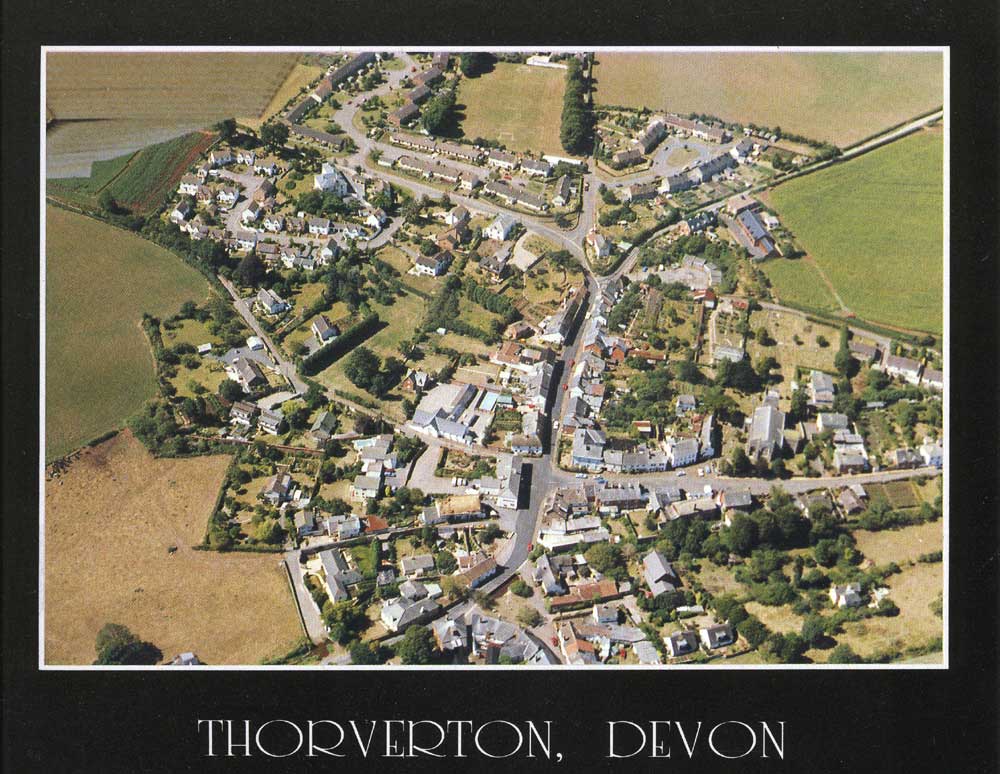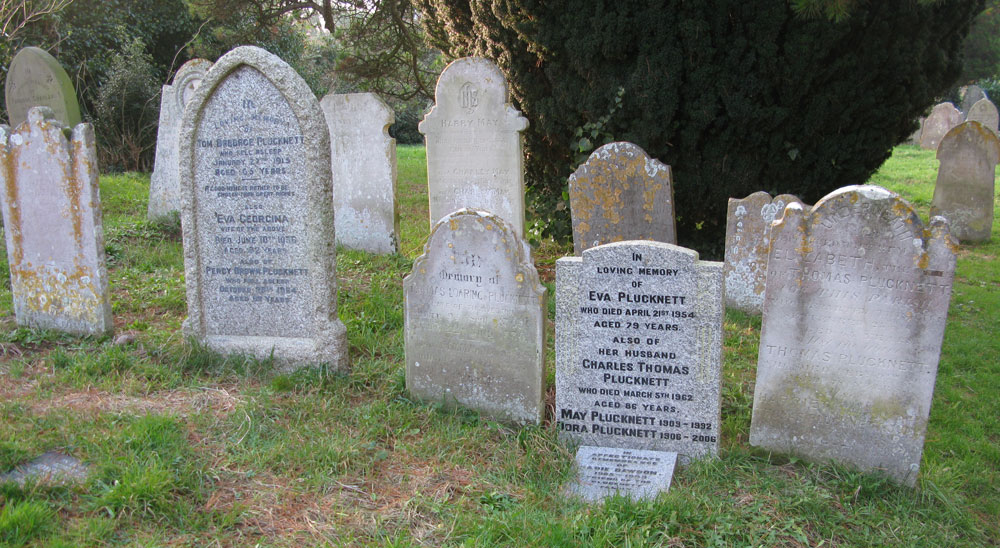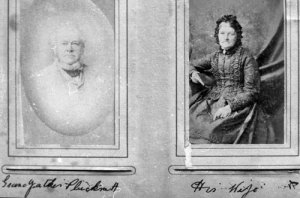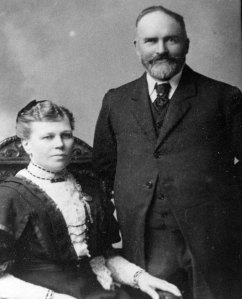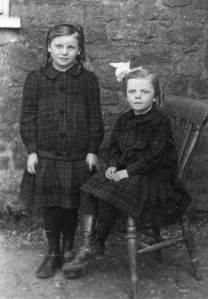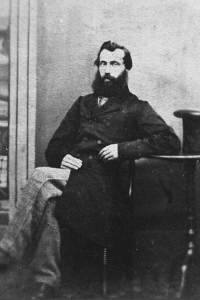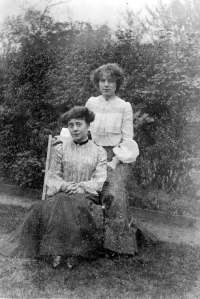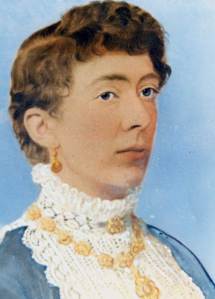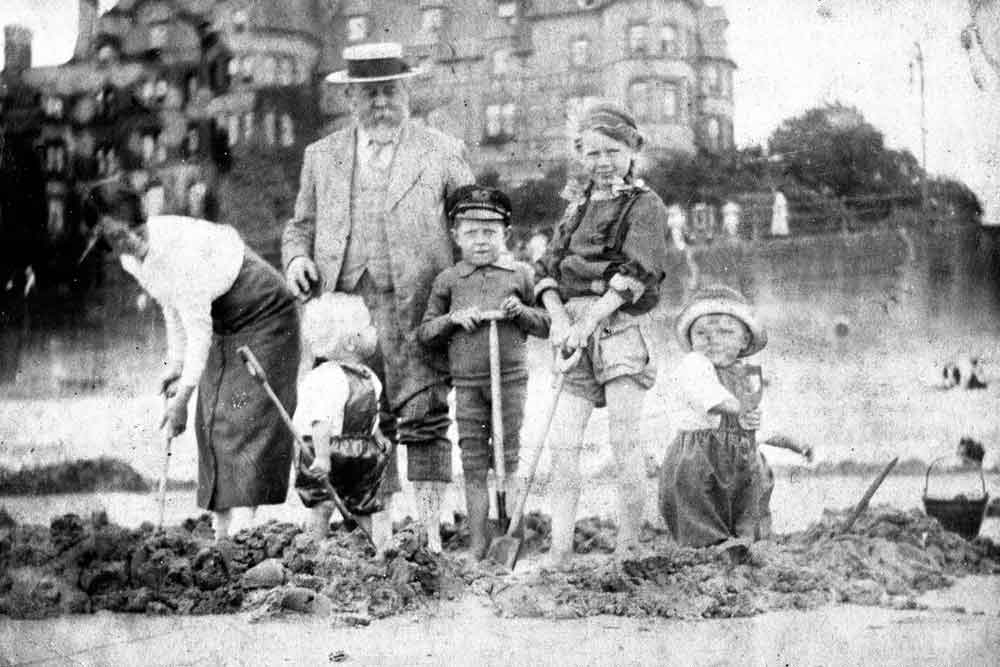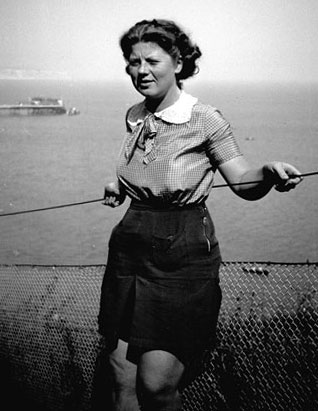
Jeanne Marion Winchurch was born on 5 July 1919. By this time Percy Walter Winchurch, her father (he was also my grandfather) was well established as a businessman. He clearly prospered during the 1920s since photographs show Percy and his family in increasingly comfortable surroundings and on holiday in Devon and later Cornwall. The children both had private educations.
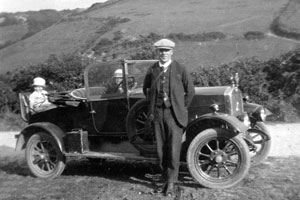
There was always a car somewhere in the pictures, as in this one taken in what looks like the Welsh border country; a popular destination for Midlanders on a ‘Sunday day out’
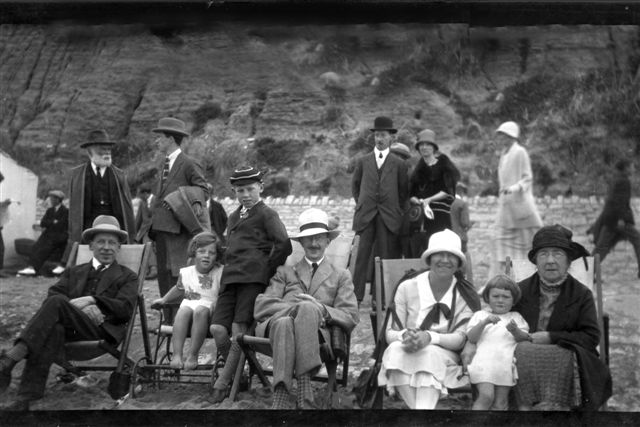
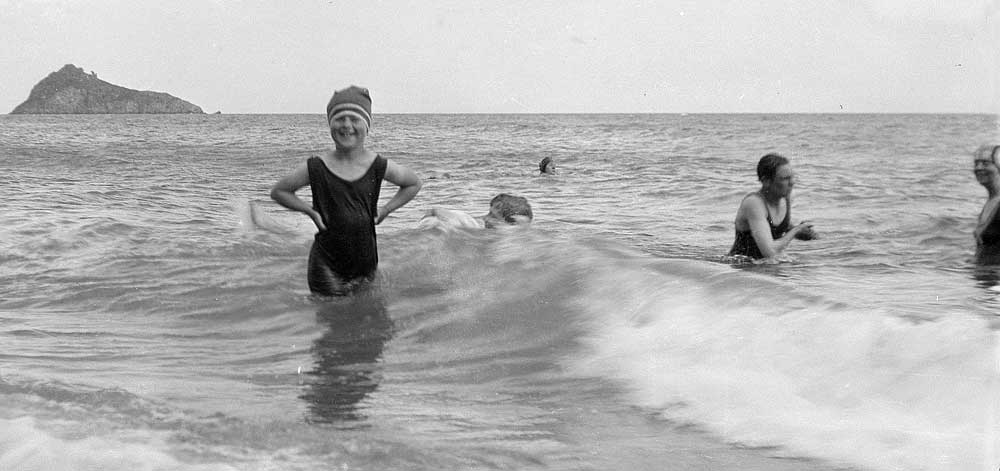

Jeanne was successful at school, excelling at languages and mathematics. She was also a strong swimmer and an avid supporter of West Bromwich Albion Football Club. This led to a friendly rivalry with Percy whose loyalties always were directed towards Aston Villa. He was a season ticket holder and shareholder.
At the start of the Second World War, Jeanne’s life moved into a new direction. Vic my father, had joined the Royal Navy in 1941 and Jeanne, who by this time was doing well with a firm of accountants, desperately wanted to enlist in the WRNS (Women’s Royal Naval Service).
Early in 1943, she finally got her wish
Following the revelations about the Enigma decoding process, involving literally hundreds of WRNS acting, in effect, as a human computer in an operation led by Alan Turing at Bletchley Park in Bedfordshire, it seemed very likely to me that her rapid recruitment happened because of her mathematics and accountancy qualifications.
I was surprised to find from Jeanne’s service record that she spent the early part of her wartime service at HMS Pembroke, nominally the supply department, based at Chatham, but there is no doubt that her recruitment corresponded with this surge of WRNS personnel with Maths qualifications.
By the spring of 1943 she was on leave at Quinton in her new uniform
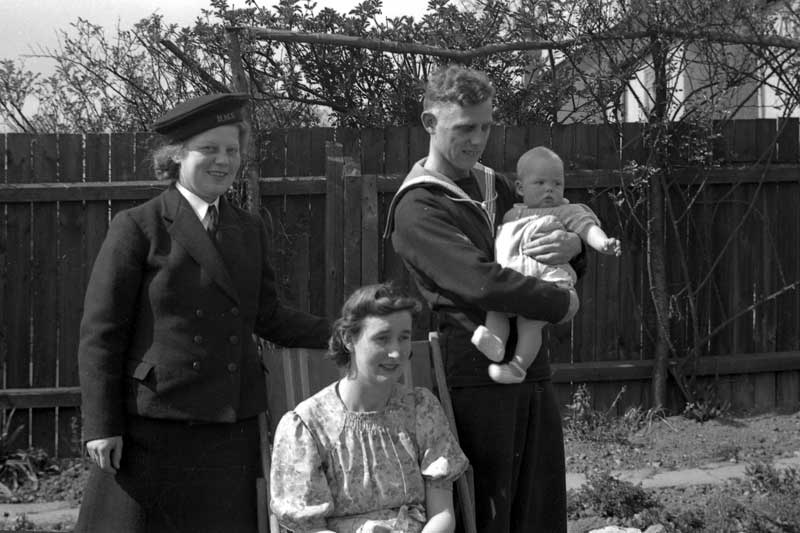
Jeanne clearly had a succesful three years to demobilisation in March 1946. She was by then a Wren Petty Officer and her service record notes that her character was ‘Very Good throughout service’.
Vic had risen to Petty Officer too, but only in an acting capacity. It is of course understandable that being parted from his wife and new son must have dampened his enthusiasm for the service, particularly towards the end of the war.
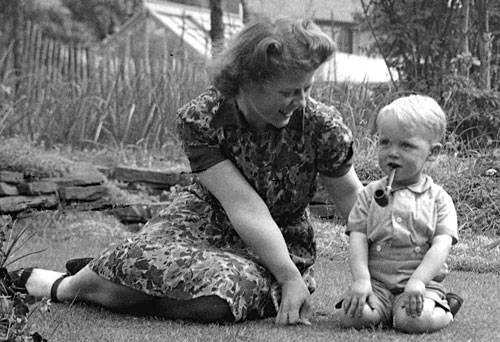
Very soon after demob, Jeanne took up the post of Secretary to the Birmingham branch of the International Friendship League.
This organisation had been set up before the war to promote interaction between young people, primarily within Europe
I quote from the IFL website (still in existence in 2007 ) :
In August 1931 30 students from Berlin University spent a holiday at the bungalow of Noel Ede at Peacehaven in Sussex and with British students built an extension to the overcrowded home.
On 26 September, with three friends Noel Ede inaugurated the IFL.
Reading those lines now there is a double irony.
Firstly, the name ‘Peacehaven’ at a time when Nazism was beginning to take hold in Germany. A peace so violently shattered.
Secondly, Jeanne’s own ‘European relationship’, which was to end so tragically a few years later.
She seems to have been very enthusiastic about her role, there are photos of a visit to Holland and she bought back souveniers: for example a wooden miniature clog with a slotted metal plate to use as a money box .
This was for me and I still have it.
Jeanne accompanied us on outings and holidays too. Here is a photo from about 1946 or 47 taken at Weston – Super – Mare
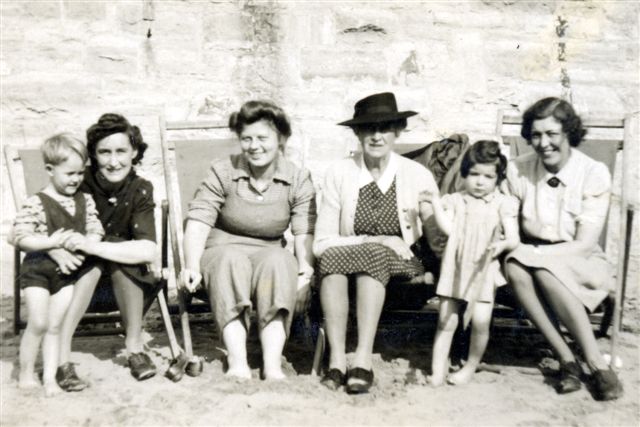
Jeanne’s suicide in June 1949
1948, Jeanne met a German ex prisoner of war called Peter. She was by now in her late twenties and I don’t think she had had a long term boyfriend before this. The relationship developed and Peter was taken to meet Percy and Marion. This can’t have been easy for Percy, in particular, because he had very strong anti German views and he must have been worried about Jeanne’s association with a young man who was basically homeless and without a job.
Towards the end of 1948, Peter returned to Germany to look for work. He seems to have gone to stay with relatives in Wiesloch in South Germay, but left to travel to the ‘British sector’ early in 1949. From this point onwards, Jeanne apparently lost touch with him, but continued to write to him via his sister in law in Wiesloch.
Then in June 1949, Jeanne’s world fell apart.
The sister in law wrote telling Jeanne that Peter was about to get married.
Percy and Marion were away at the time ( I think in Torquay ). Jeanne’s friend Muriel Fletcher was so concerned abut Jeanne’s state of mind that she stayed with her for the night after she received the letter.
But the next day, Sunday 20 June 1949, Jeanne killed herself by putting her head in the gas oven. Percy found her when he returned home,
The Birmingham Post reported the inquest:
HEARD GERMAN WAS MARRIED
EX-WREN’S SUICIDE AFTER LETTER
SUFFERED “GREAT DISAPPOINTMENT ”
When an inquest was held in Birmingham today on the secretary of an International Friendship League centre, the City Coroner (Dr .W. H. Davison) was told that the girl, an ex-Wren petty officer, Jeanne Marion Winchurch (aged 29), had suffered a great disappointment in an attachment with a former German prisoner-of-war.
The girl’s father, Percy Walter Winchurch, with whom she lived at 755, Hagley Road West, Quinton, said he found his daughter lying with her head on a cushion in a gas-oven in the house.
The cause of death was given as asphyxia due to gas poisoning.
Witness told the Coroner that his daughter had recently completed the final of an extremely difficult accountancy examination and that the suspense of waiting for the result had been very worrying for her.
” About 18 months ago,” he said, “Jeanne met a German prisoner of war. I met him once at our house when he came to tea.” The man returned to Germany last Christmas, and Jeanne, he believed, was expecting to renew the association and marry him.
Very Depressed
Muriel Ann Fletcher, who worked with Miss Winchurch, said that Jeanne collected a letter from the International Centre on Saturday, which told her that her German boy friend was married. She believed the letter had been written by the man’s sister-in-law.
Because she could see that her friend was very depressed as a result of this news she stayed the night with her.
The girl was left alone in the house on the Sunday night.
Returning a verdict of “Suicide while the balance of the mind was disturbed,” the Coroner said her death was due to an accumulation of various disturbances.
The disappointment of her German friend in not cooperating as she intended and the worry of the examination had had a cumulative effect, resulting in a strong feeling of depression and melancholy.
The effect on the whole of our family of this tragic event was profound and lasts to some extent even today, over sixty years later.
I can still remember walking home from school along Thornhill Road in Handsworth. It was a Wednesday and a custom had grown up that Marion, my Grandmother came over from Quinton for tea. She would look out of the window for me as I walked the three hundred yards or so from St Michaels Primary School, which stood on the junction of Thornhill Road and Soho Road.
That day, I knew from quite a distance that she wasn’t there.
I believe that Jeanne had asked to come away on holiday with us that summer to Friog, near Barmouth, but that my mother had refused because the cottage was too small. I know she regretted that decision to the end of her life.
Contact was made with Peter’s family the following month (July 1949), but I don’t think there was ever any direct correspondence. Marion seems to have written to the sister in law who had broken the news of Peter’s marriage, because I have the reply, written from Wiesloch. This letter is written in German, but to the best of my knowledge, Marion neither spoke or understood the language, so I assume that she had sent the basic details in English.
The reply begins :
Wiesloch
30/7/49
Dear Mrs Winchurch
I am very distressed by the sad news about your beloved daughter,Jeanne, which I could almost not believe. When I received your letter
I felt such deep pain that I was not able to reply immediately.
First I would like to send you and your whole family my heartfelt sympathy on your deeply felt suffering over your unforgettable daughter.
The pain is especially unbearable for a mother. My whole family and I are so sad at the sad news.
I feel so sorry for Jeanne and feel the pain as deeply as if she had been my own sister.
I got to know and get on with Jeanne so well through our exchange of letters.
I would like so much to been able to send her more news about Peter but unfortunately he only ever wrote very little to us too.
We are all appalled at Peter that he has a human soul on his conscience, that he was so cowardly towards your daughter, Jeanne, and that after he left us he did not ever write to her again………………..
Peter left us at the beginning of January und first went to visit his sick mother in Spiterl?? and from there then went to friends in the English zone to look for work there and said to me when he left us that I should accept all post from Jeanne and as soon as he found work he would write to Jeanne and if he didn’t find work then he would come back to us and I kept comforting Jeanne with these words.
And throughout this whole time we heard very little from him. At Easter he wrote to us that he would come to us after Easter. We waited eagerly for him and unfortunately he didn’t come.
And at Whitsun the news came from him that he was about to get married. We were all horrified by the news. And so I felt that I had to write to Jeanne with this news if he was so cowardly and hadn’t written to her. But believe me, dear Mrs Winchurch, how heavy my heart was to write this news to Jeanne. Believe me that as his sister in law I can never forget how Peter treated Jeanne and that he brought her to her death, it will and can never bring Peter any happiness because I feel so deeply that if fate had handed out the same to me as to Jeanne I would have arrived at the same point. Because one person takes their life more easily and another person less easily.
We would very much like to have got to know Jeanne because from her letter she seemed such a good person. But unfortunately fate did not want that.
May God give Jeanne eternal peace because she passed through difficult times.
I would still like to be able to hear more about how Jeanne died.
With sincere good wishes from our whole family.
I don’t know if Marion or Percy ever had this letter translated, but I doubt it.
As far as I know, its contents have remained unknown for almost sixty years.
As part of this project, Jane Monti kindly offered to translate it for me and I am very grateful to her.
I know the letter, its contents and the story moved her, especially as a visit to Berlin with David, my brother, shortly before she did the translation had sharpened her awareness of the effects of the war.
As Jane puts it :
“..I can’t help wondering how many thousands of individual tragedies like this must have been brought about directly and indirectly as a result of the war and all the events leading up to and surrounding it.”
Very sadly, Jane herself died not long after this act of kindness.
Jeanne had sat the finals examination for the Chartered Institute of Secretaries in Birmingham in May 1949. A cutting from the Birmingham Post records that she passed, but this result came after her death.
Jeanne was undoubtedly of one of the most talented Winchurchs of her generation.
The aftermath of Jeanne’s death
With characteristic single mindedness Percy moved on. Jeanne was rarely mentioned by anyone in the family in my experience. I think this is probably a common way of dealing with a suicide, especially sixty years ago, but it has never corresponded with my own feelings.
I think that her relatively short life is worth commemorating for so many reasons.
Jeanne was the essence of a ‘modern woman’ – intelligent, articulate, determined and passionate.
She was in the vanguard of the post war process of reconciliation and reconstruction in Europe.
It is a tragedy that in so taking part Jeanne paid such a terrible price and those of us who were left suffered such a profound loss.
John Winchurch
Cornwall
21 December 2008
